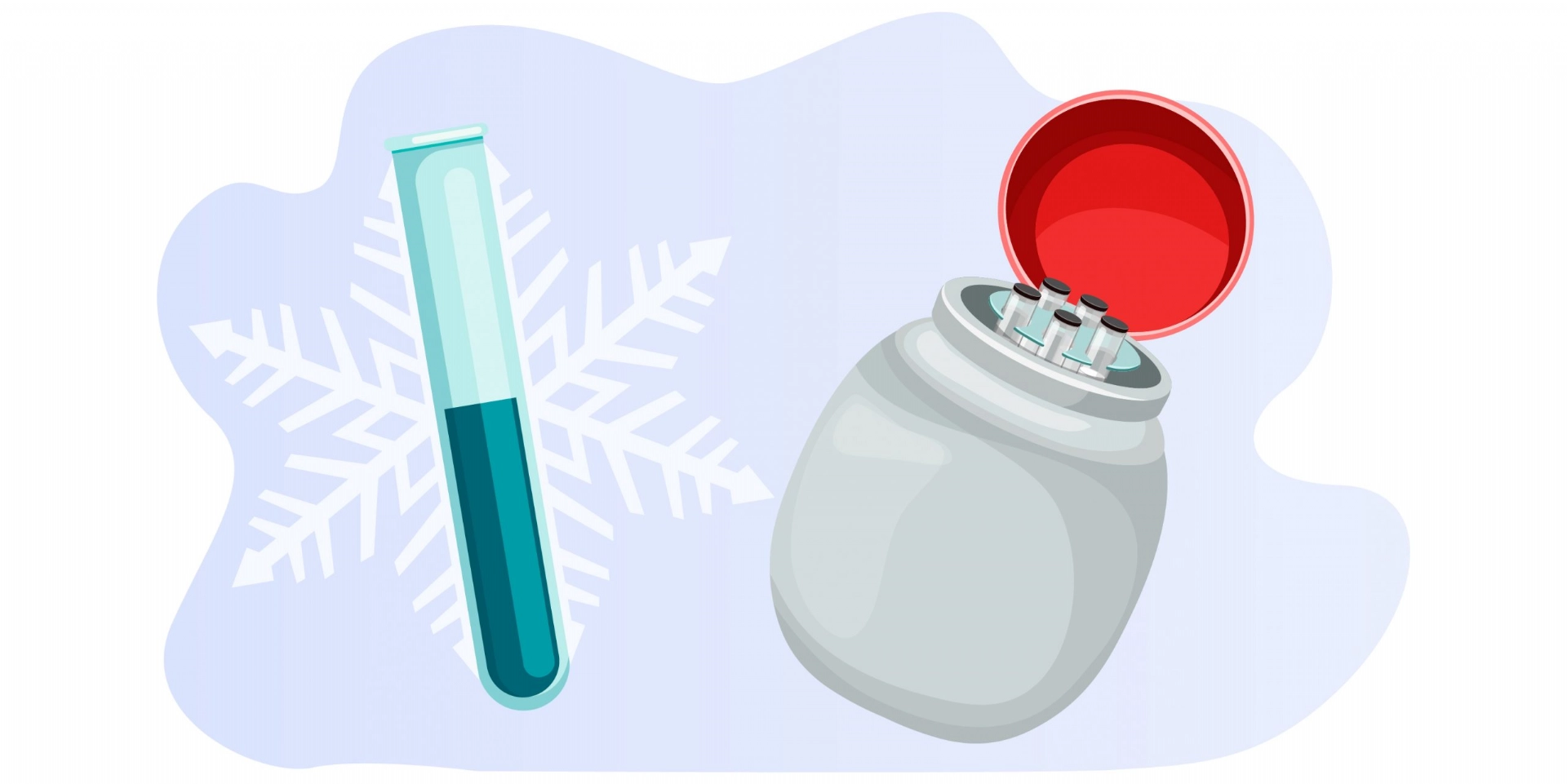
Embryo, Sperm and Egg Freezing
Embryo freezing: A successful IVF center must have a successful embryo freezing program to protect all the obtained embryos, and provides very important advantages to the patients and offers new pregnancy chances. After 1 or 2 embryos have been transferred to you in embryo transfer, if there are still good quality embryos left behind, these embryos can be frozen and stored, and if you cannot be pregnant or want to have children again in the future, these embryos can be thawed and transferred to you again. Sometimes the embryo freezing process is needed for medical reasons; in cases where the risk of severe OHSS is high, or when problems occur in the endometrium such as bleeding, polyps, thin endometrium, etc. during transfer that can prevent pregnancy, or in patients who will receive chemotherapy for cancer treatment, all embryos may need to be frozen. Freezing can be done at an early (prezygote) or later (embryo or blastocyst stage) stage. Embryos frozen by special programmable means or preferably by vitrification can be preserved in liquid nitrogen in special tanks for years.
In the cycles in which frozen embryos are used by thawing, there is no need for egg development and egg collection. Frozen embryos can be prepared with some intrauterine hormones for successful transfer, as well as embryo transfer can be done by determining the appropriate day in women who ovulate regularly. There is no difference between both methods in terms of pregnancy success. The transfer process is done in the same way as the transfer of unfrozen embryos. In successful centers, it is possible to achieve a similar or even higher rate of pregnancy than in fresh transfer with the embryo freezing process. In this way, it will provide additional advantages such as repeated use of drugs, egg collection and anesthesia to develop eggs, as well as the fact that the expensive and long IVF process is not repeated and economical. In addition, by preventing multi-embryo transfer, it will create a very important opportunity for you to prevent multiple pregnancies and have a single living child. To date, no increase in miscarriage and congenital abnormalities has been found in pregnancies obtained from frozen embryos. In our country, first pregnancy was obtained with frozen thawed embryo transfer by our team.
Sperm freezing: Sperm can be frozen and stored to prevent the risk of finding sperm in men with very low sperm count in the future, or radiation or chemotherapy for the treatment of cancer or reproductive men that will get the channels to be passed through sperm or testicular loss prior to surgery, to prevent the problem of infertility. In the same way, freezing the sperm obtained by various surgical methods such as TESE, TESA will prevent the man from undergoing the same surgical procedures in each new trial.
Egg (oocyte) freezing: If the ovarian reserve is low in women, freezing the eggs in patients who will receive radiation or chemotherapy due to cancer with surgeries that may reduce the ovarian reserve or cause ovarian tissue loss will provide a chance for a woman to have children in the future. However, in the egg freezing process, the chance of pregnancy in the future is directly related to the woman’s age and the number of frozen eggs.
